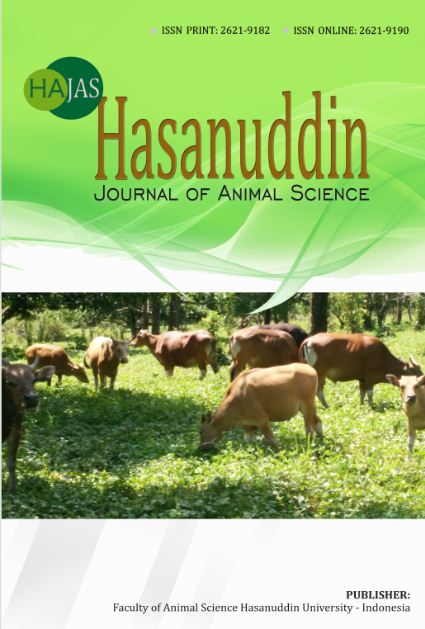Level of DNA similarity the horned and polled Bali Cattle Using Microsatellite approach
DOI:
https://doi.org/10.20956/hajas.v4i2.21798Abstract
The phenomenon of polled on Bali cattle should have a scientific explanation that explains the validity of the breed. Whether polled Bali cattle still have a genetic relationship with horned Bali cattle or are the results of crosses with other cattle breeds. This study used microsatellite markers to identified the genetic diversity and relationship between polled and horned in Bali cattle. The number of samples of 40 polled Bali cattle and 189 Bali horned cattle. The age of the study sample was 2.5 - 3.5 years. Research data analysis includes: genotype and allele frequencies, Hardy Weinberg Equilibrium analyze, observed and expected heterozygosity values, and polymorphic informative content. Polled Bali cattle have similar morphological and genetic characteristics with horned Bali cattle based on HEL9, INRA035, ILSTS045, and HEL13 microsatellite. HEL9, INRA035, ILSTS045, and HEL13 microsatellite can be a genetic marker for polled Bali cattle.Downloads
Download data is not yet available.
Downloads
Published
2023-02-16
Issue
Section
Articles
License

This work is licensed under a Creative Commons Attribution-NonCommercial 4.0 International License.










